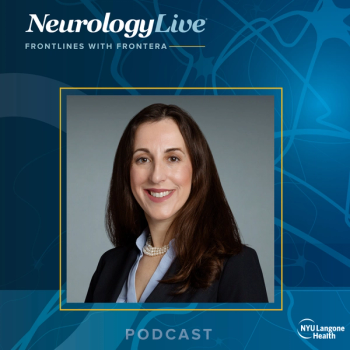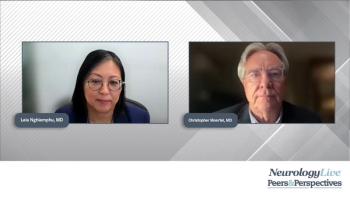
Overviewing SLEEP 2025: Thoughts and Perspectives From the President of AASM
Anita Shelgikar, MD, a clinical professor at the University of Michigan and president of the American Academy of Sleep Medicine, provided post-conference perspectives on the 2025 SLEEP meeting, giving clinicians insights on the latest in research and treatment updates.
Since 1975, the American Academy of Sleep Medicine (AASM) has played a leading role in shaping the field of sleep medicine, leveraging the multi-disciplinary expertise of its members to forge a new medical specialty. With over 11,000 members and 2300 accredited sleep centers, the organization has been a resource for education and research, development of clinical guidelines, advocacy and public awareness, and interdisciplinary collaboration.
About a month before the
Following the meeting, NeurologyLive® caught up with Shelgikar to get her thoughts on the most notable takeaways from the event, including the advances in research and where the field is headed. In the interview, Shelgikar provided context on a number of relevant hot topics, including the crossover between sleep disorders and neurodegenerative conditions, the emergence of GLP-1 agonists to treat sleep apnea, and the major trends and themes in research that the clinical community should keep eyes on in the near future.
NeurologyLive: What kind of representation was at this year’s meeting?
Anita Shelgikar, MD: SLEEP 2025 in Seattle was the largest SLEEP meeting to date, with over 6,000 attendees including clinicians, researchers, trainees, biomedical engineers and industry experts. Hot topics included machine learning and artificial intelligence, metabolomics and genomics, sleep and the glymphatic system, orexin pharmacology, and obesity management.
What are the most pressing questions we still have regarding the connection between sleep disorders and neurodegenerative diseases?
Some of the most pressing questions about the connection between sleep disorders and neurodegenerative diseases have to do with risk factors, prevention, and potential treatment. What aspects of untreated sleep disorders and sleep habits increase a person’s risk for development of a neurodegenerative disease? Does early identification and intervention to improve sleep quality and sleep quantity help prevent the development of neurodegenerative disease? In what ways does treatment of an underlying sleep disorder affect progression of a neurodegenerative disease?
Describe the feeling and vibe from this year’s meeting; what is the clinical community buzzing about?
The environment at SLEEP was very lively - the combination of the beautiful venue, perfect Seattle weather, and excitement for advancements in clinical sleep medicine and sleep and circadian research. The American Academy of Sleep Medicine (AASM) celebrated 50 years, and the Sleep Research Society (SRS) continued to highlight the work of cutting-edge researchers. Right now, the clinical community is especially energized about the role of AI and machine learning in the diagnosis and management of sleep disorders, metabolomics, genomics, and biomarkers’ relationship to sleep disorders, and obesity management. We are excited to carry the momentum from the meeting into the next year and continue collaboration with experts across the field.
Are there any major trends or themes present at this year’s meeting that speak to where the field is moving toward?
Some major themes at SLEEP 2025 included the role of innovation to improve care of sleep disorders in patients of all ages, the continued recognition that sleep and circadian health are fundamental to overall health, and the importance of continued federal funding for sleep and circadian research.
What are your thoughts on the emergence of GLP-1s to treat sleep disorders? What considerations should clinicians have as these agents are more widely used?
The AASM published a statement regarding the FDA’s approval of Zepbound (tirzepatide) for adults with moderate-to-severe obstructive sleep apnea (OSA) and obesity. While this FDA approval increases the number of available OSA treatment options, it’s important to note that the approval only pertains to a subset of individuals with OSA related to obesity. Review of an individual’s medical history, sleep study results, and other medications are important in determining whether use of Zepbound should be pursued for a given person. Additionally, weight loss from Zepbound must be maintained over time to continue experiencing a benefit for OSA, and monitoring for side effects is an essential part of the treatment process. Overall, patients should speak with their sleep medicine provider to determine if use of Zepbound for moderate-to-severe OSA in the setting of obesity is a safe treatment plan that meets their needs.
Any emerging concepts or approaches that you feel will garner more attention in the coming years?
The depth and breadth of the field of sleep medicine continues to expand. We’re excited for continued advancements in the diagnosis and treatment of a variety of sleep disorders - sleep related breathing disorders, central disorders of hypersomnolence, circadian rhythm sleep-wake disorders, and sleep related movement disorders to name a few - and for the translational research that will allow us to improve sleep and overall health for people of all ages in our communities.
Newsletter
Keep your finger on the pulse of neurology—subscribe to NeurologyLive for expert interviews, new data, and breakthrough treatment updates.



















